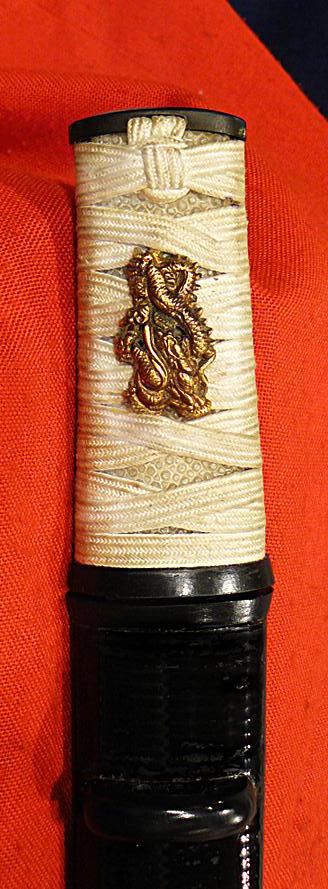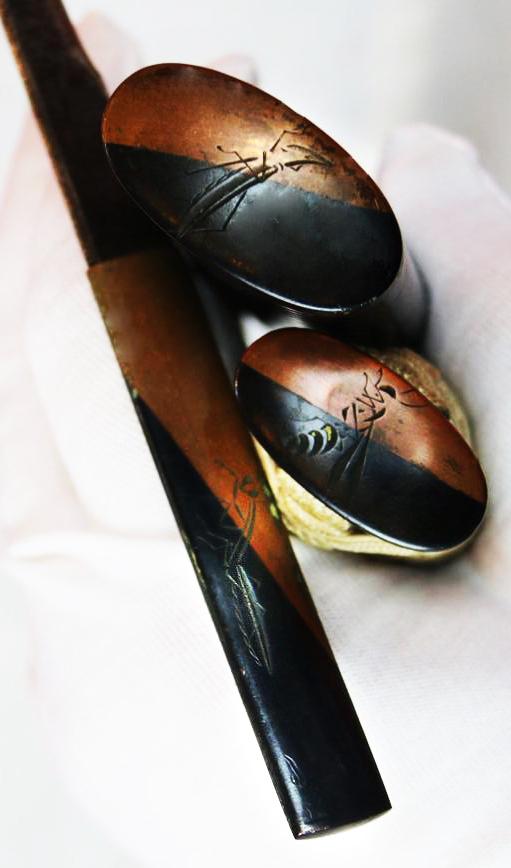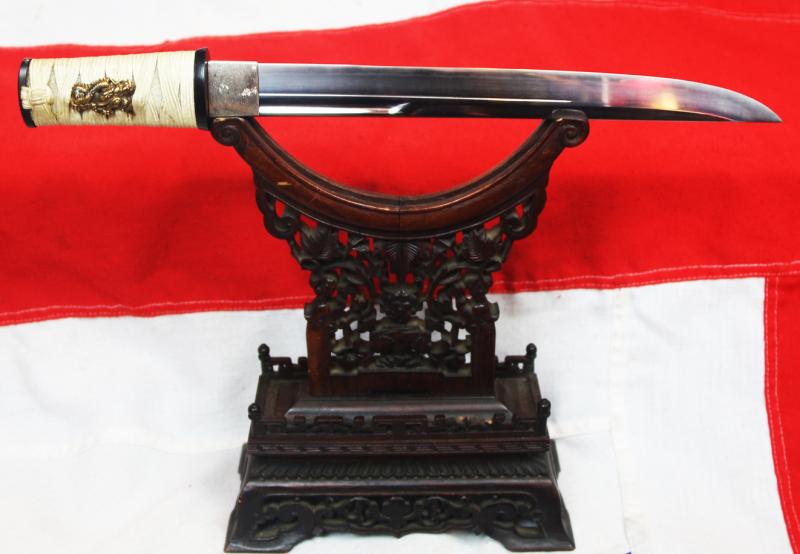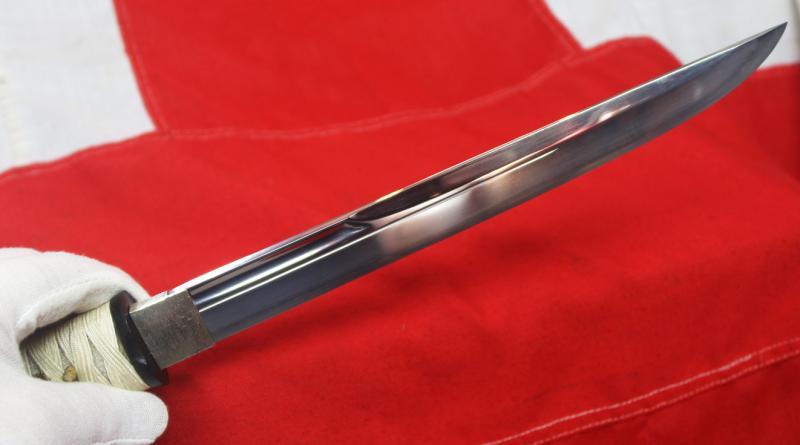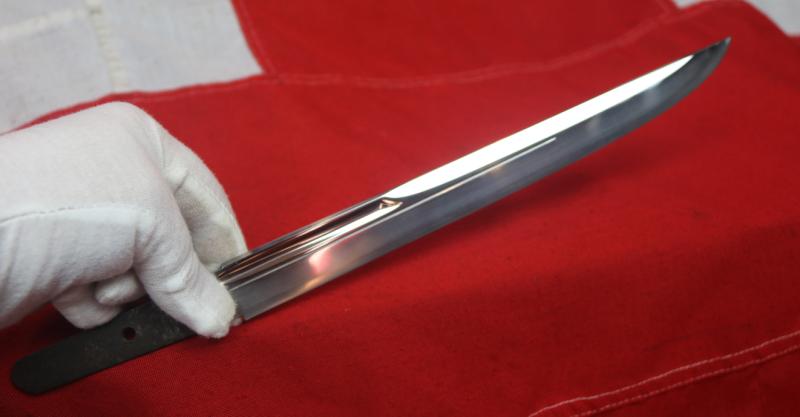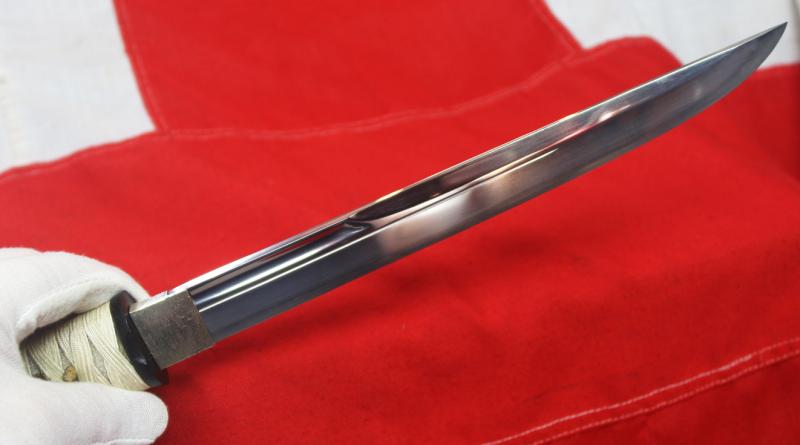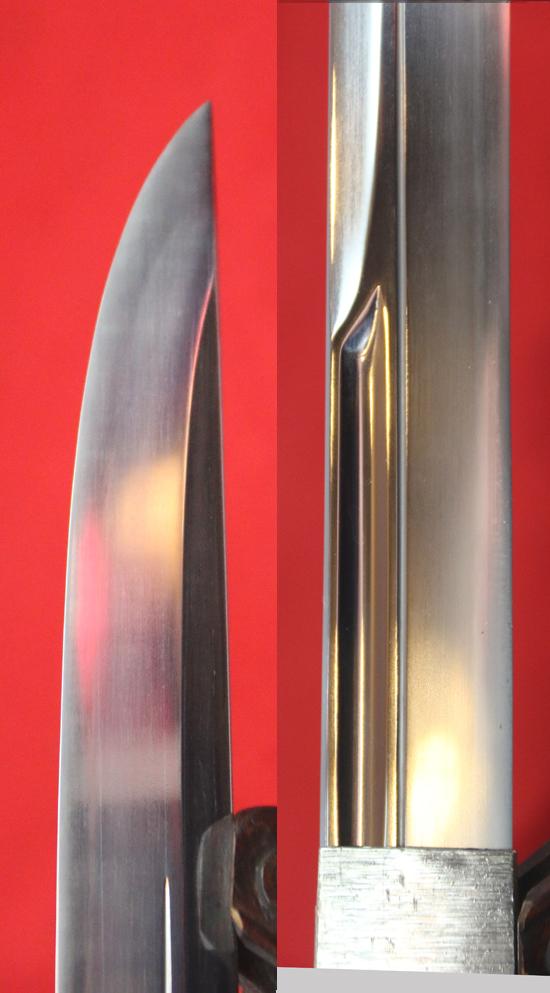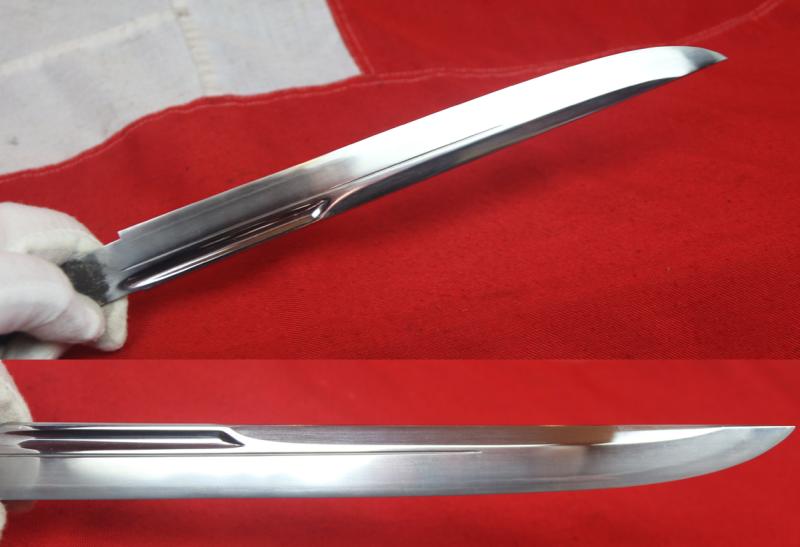A Shinto Aikuchi Tanto, Unokubi-Zukuri With Hi Blade & Stunning Bi-Colour Shakudo Fittings Katakiri-bori Carving, on Migaki-ji of Insects, a Cricket a Hornet and a Praying Mantis
Circa 1700. A very attractive Samurai tanto that has lain untouched for likely 140 odd years or more. All matching and most attractive Edo period bi-colour hand carved shakudo fittings katakiri-bori carving, on migaki-ji including a kozuka, engraved with a preying mantis, a wasp on the kashira and a grasshopper on the sayajiri. The menuki are of fine gold overlay of dragon, and the tsuka has imperial off-white silk binding. The blade is in a unokubi-zukuri form similar to naga nata in stunning polish. The original Edo lacquer saya is uniformly ribbed along it's length with age cracking below the kozuka pocket, and small bruises at the base. Very fine hammered silver foil covered habaki.
The tanto is commonly referred to as a knife or dagger. The blade can be single or double edged with a length between 15 and 30 cm (6-12 inches, in Japanese 1 shaku).
The tanto was designed primarily as a stabbing weapon, but the edge can be used for slashing as well. Tanto are generally forged in hira-zukuri style (without ridgeline), meaning that their sides have no ridge line and are nearly flat, unlike the shinogi-zukuri structure of a katana.
Some tanto have particularly thick cross-sections for armour-piercing duty, and are called yoroi toshi.
Code: 25141
3650.00 GBP


